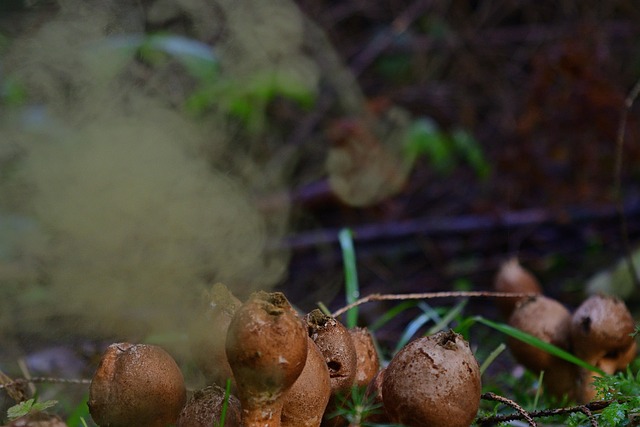Despite common belief, most household molds are benign. Black mold (Stachybotrys chartarum), though potentially toxic, poses minimal risk under normal conditions. Debunking toxic mold myths highlights that health hazards vary by mold type, with factors like exposure duration and sensitivity determining risks. Proper remediation and preventive measures can mitigate health concerns from mold growth, emphasizing the importance of distinguishing between harmless and potentially harmful molds through ventilation, humidity control, addressing leaks, and surface cleanliness.
“Uncover the truth behind toxic black mold and separate fact from fiction in this comprehensive guide. While household molds are common and often harmless, certain types, like black mold (Stachybotrys), have garnered concern due to their potential health risks. This article demystifies toxic mold, exploring its characteristics, health impacts, and practical tips for identification and prevention. Understanding these nuances is key to maintaining a healthy living environment, dispelling common myths, and ensuring peace of mind.”
- Understanding Common Household Molds
- Toxic Black Mold: Facts vs. Fiction
- Health Risks Associated with Mold Exposure
- Identifying and Preventing Mold Growth
Understanding Common Household Molds

Many people often mistake all molds as harmful, but most common household molds are actually harmless and even helpful. These non-toxic molds play a vital role in breaking down dead organic matter, contributing to nutrient recycling, and supporting plant growth. They can be found growing on various surfaces around the house, such as bathroom walls, under sinks, or inside cupboards. While unsightly and often discolored, these common molds usually pose no significant health risks to healthy individuals.
However, it’s important to be aware of the myths surrounding toxic mold. Not all molds are created equal; some species, like black mold (Stachybotrys chartarum), have gained a reputation for being highly toxic. But research suggests that under normal circumstances, this mold produces limited mycotoxins and only becomes a health hazard when it grows extensively and is disturbed, releasing harmful spores into the air. Debunking toxic mold myths is crucial to understanding the true risks associated with different types of molds in your home.
Toxic Black Mold: Facts vs. Fiction

Toxic black mold, often referred to as Stachybotrys chartarum, has been a subject of fear and fascination for many. There are numerous myths surrounding this type of mold that can cause panic among homeowners. It’s important to separate facts from fiction when it comes to toxic mold.
One common misconception is that all black mold is inherently toxic. While certain species of mold, including Stachybotrys, produce mycotoxins that can be harmful if inhaled or come into contact with, not every instance of black mold presents a significant health risk. Additionally, the presence of visible black mold does not always indicate high toxicity levels; it depends on various factors such as the amount, duration of exposure, and individual sensitivity. Debunking these toxic mold myths is crucial to helping people understand that proper remediation and preventive measures can effectively mitigate potential health concerns associated with household mold growth.
Health Risks Associated with Mold Exposure

Many people often dismiss mold as a mere cosmetic issue, but prolonged exposure to mold, especially certain types like black mold, can have severe health consequences. The reality is that mold thrives in damp environments and can quickly spread, often hidden behind walls or under flooring, making it difficult to detect until it’s already caused problems.
Health risks associated with mold exposure vary widely depending on the type of mold and the duration and intensity of exposure. Common symptoms include respiratory issues such as wheezing, coughing, and difficulty breathing, especially in individuals with asthma or other lung conditions. Other potential effects include skin irritation, allergic reactions, and even neurological problems. It’s important to dispel toxic mold myths; not all mold is equally dangerous, but certain types, like black mold (Stachybotrys), are known to produce mycotoxins that can cause significant health issues, particularly in vulnerable populations.
Identifying and Preventing Mold Growth

Identifying and preventing mold growth is crucial, especially in differentiating between harmless household mold and the potentially harmful toxic black mold. Many people often believe that any visible mold indicates a toxic presence, but this is a common myth. Not all molds produce mycotoxins, and while some species may trigger allergies or respiratory issues, others are relatively harmless. To avoid panic, it’s essential to know your mold types and understand their characteristics.
Prevention is key when it comes to mold control. Regular ventilation, maintaining proper humidity levels, and promptly addressing water leaks can significantly reduce the chances of mold growth. Ensuring good air circulation, especially in damp areas like bathrooms and kitchens, helps deter mold from establishing itself. Additionally, keeping surfaces clean and dry creates an environment unwelcoming to mold spores, busting many toxic mold myths once and for all.
